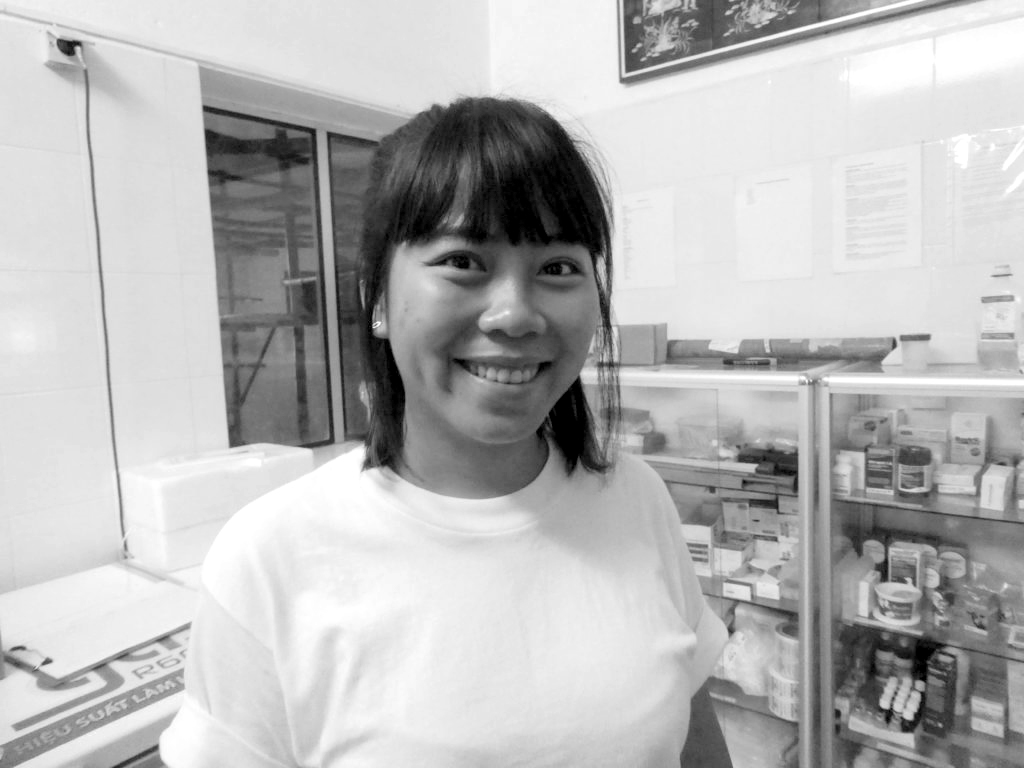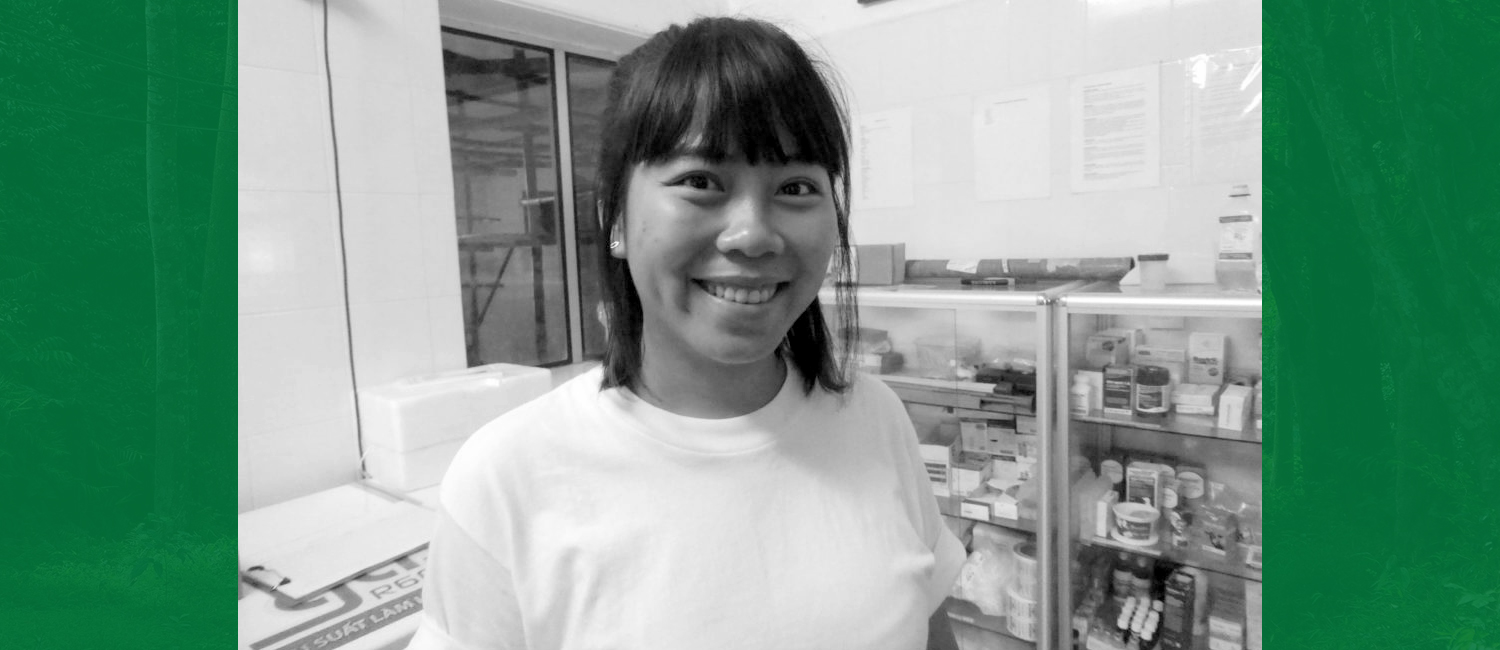Thuy is telling us about her experience!

You arrived last spring, what were your motivations to work in EPRC?
I was working on pets and small animals for a few years after I graduated vet school in Ho Chi Minh city, and I had very good time working with them. But since there are many vet care structures in the city I decided to challenge myself in a new field – wild animals. I was considering working for EPRC or a safari, in the end I got inspired by two people I met in the interview at the EPRC: Sonya, the previous director of the center, and Dr. Bonnie Raphael from the Wildlife Conservation Society, who is currently collaborating with the EPRC and has become my mentor.
What is a typical working day for you here, it must vary a lot right?
Animals in EPRC don’t often have health issues, mostly because they have very good care from our staff. That makes my work easier, I usually work with our head keepers and keepers on updating information about the animals condition, planning health checks, organizing release, reintroduction and breeding, implementing and following up the treatment schedule for the unhealthy animals, collecting data for future research matters. Besides, I occasionally support the other rescue centers in Cuc Phuong, and gain more experience working with various endangered wildlife.
Can you describe what you do during a standard health check?
A standard health check should ideally include physical exam, body measurement, fecal exam, blood sampling, ultrasound and radiography… Due to the limited equipment onsite I am only able to do some of them, but we are working hard to improve that.
What are the challenges when working as a vet for a rescue center?
It is always challenging to work in a rescue center, especially caring for wild animals. We have to make sure they have the best care without causing too much stress in captivity, and that they keep their natural behavior as much as possible. Most of the time, they arrive here after traumatizing experiences and every animal is reacting differently to their changing situation. The rescues can be especially challenging, sometimes we have to drive for several days to bring the animals back to the center, work after-hours to check their condition and administrate emergency treatment…
Do primates have specific weaknesses and risks of diseases to which you have to pay particular attention?
They can carry zoonotic diseases that can be transmitted to and from humans. Human and non human primates have many similarities, not only anatomically, but also physically, which make them more sensitive to specific infections and viruses. Our staff can potentially be in contact with the animals on a daily basis so we follow strict sanitary measures.
What do you think could be improved?
Although EPRC has been existing for over 25 years, we are facing difficulties due to the constantly increasing number of animals staying here, as well as the complication in diagnosis and treatment for our very unique species… We are lucky to get occasional help and temporary material from other rescue centers but we are in need of many equipments and technical tools for vet care. We count on peoples support and donations to try improve the life and care of our beautiful endangered primates!



